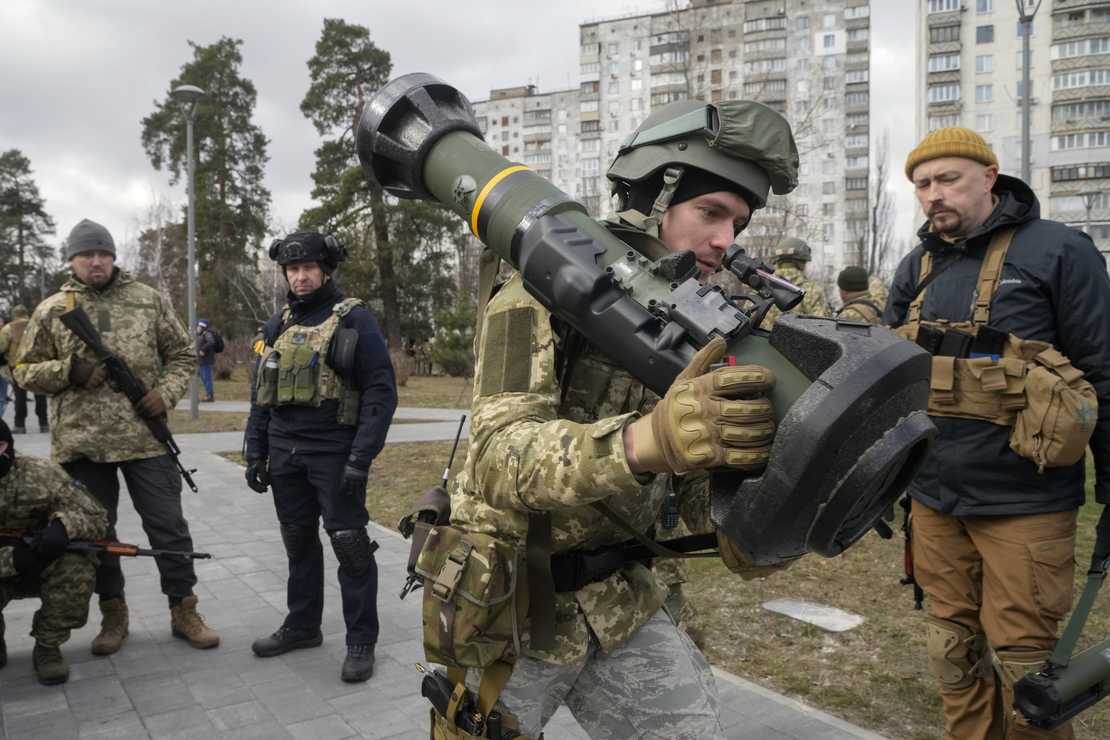
Hope springs eternal, but there’s at least some reason to wonder whether this Ukrainian presidential adviser may be right. In fact, Oleskiy Arestovich’s assessment of the status of Russian forces in Ukraine might tend toward the pessimistic, at least if current trends continue. And assuming, of course, that Ukraine’s stirring home defense doesn’t collapse first:
In a video published by several Ukrainian media, Arestovich said the exact timing would depend on how much resources the Kremlin was willing to commit to the campaign.
“I think that no later than in May, early May, we should have a peace agreement, maybe much earlier, we will see, I am talking about the latest possible dates,” Arestovich said.
“We are at a fork in the road now: there will either be a peace deal struck very quickly, within a week or two, with troop withdrawal and everything, or there will be an attempt to scrape together some, say, Syrians for a round two and, when we grind them too, an agreement by mid-April or late April.”
A “completely crazy” scenario could also involve Russia sending fresh conscripts after a month of training, he said.
Can Ukrainians hold out that long? No one expected them to fight the Russians to a standstill for this long, so anything’s possible. The Washington Post notes in a couple of stories this morning both the surprising strength and the daunting prospect for Ukraine in the days and weeks ahead, especially as Vladimir Putin becomes more desperate to break them. First, in Mariupol, we have a harbinger of just what the costs of holding out will be:
In the more than two weeks that it has been cut off from the outside world, Mariupol, the southern Ukrainian port city, has become synonymous with the horror of the Russian invasion.
It is a place of overflowing morgues, newly dug mass graves and bodies in some cases buried under rubble or left in the streets where they fell.
On Monday a convoy of more than 160 cars escaped Mariupol, the city council said on its Telegram channel. It was the first successful attempt to set up a “humanitarian corridor” out of the city, which at one time was home to as many as 400,000 people. But much needed aid was blocked Monday from getting in by Russian forces, Ukrainian officials said.
As conditions in the city have grown more dire and the death count has surged, word of the humanitarian catastrophe has leaked out through intermittent phone calls, shakily shot videos and testimony from the handful of aid groups still working in the city.
READ RELATED: North Chicago IL Damari Perry Mother Arrested: Who Is Jannie Perry? Murder and Death Cause
Unless Ukrainian national forces can break through to relieve Mariupol, the situation looks dire in just the days ahead. Imagine what Mariupol residents will think when told it might take two months to break the Russians and send them into retreat. Ukraine probably can’t afford to commit enough troops for a offensive to relieve Mariupol either, because their first priority has to be to defend Kyiv and the government of their independent nation. If Kyiv falls, the demoralization will likely doom any formal military operation and would force a shift to partisan insurgencies, broken up and producing a number of competing leaders.
However, the good news is that Kyiv remains standing, and Ukrainians appear to have a chance to outlast Russians on this front:
The bodies of Russian soldiers were scattered by the wreckage of charred military vehicles and shelled buildings. Twenty feet away, behind tanker trucks, Ukrainian volunteers stood watch, their eyes on a cement mixer about 500 yards away. Behind it were Russian troops on the edges of Bucha, the next town over.
This front line in Irpin, on Kyiv’s northwest outskirts, had not moved in two weeks despite the Russian military superiority. That itself was a victory for Commander Casper and his fighters.
“The Russians were trying to push forward,” said the short, burly unit leader who did not give his full name for security reasons but goes by a nom de guerre. “But they didn’t expect that the Ukrainians were waiting for them.” …
“The Russians were not ready for unconventional warfare,” said Rob Lee, senior fellow at the Foreign Policy Research Institute and an expert on Russian defense policy. “They were not ready for unconventional tactics. They are not sure how to deal with this insurgency, guerilla-warfare-type situation.”
To be sure, most military analysts and Western officials still predict that Russian forces will eventually encircle Kyiv and push into the capital, possibly aided by airstrikes. While this could prove true, it’s far from clear whether Russia will prevail.
Putin has thrown everything in the area against Kyiv now, and he’s facing a humiliation rather than a triumph. It’s not for nothing that Putin’s now trying to recruit Syrians into the fight; all of the Russian forces Putin could afford to send to Ukraine are now engaged, and the Belarusians appear less than enthusiastic about joining Putin’s attempts to create an ethno-Russian crusade. Volodymyr Zelensky and his command have figured out that the Russians are paper tigers and are shredding them accordingly.
However, quantity has a quality of its own. The Russians can still resupply from three directions, assuming they have the competence to do so. Ukraine, a significantly smaller country in population, simply can’t compete on the resource front, even with the West sending lethal aid over the border. They are meeting this challenge with élan and marvelous courage, but if the Russians can start learning lessons, it’s a real reach to think they can hold out until May.
A better prediction for Ukraine is a much earlier collapse of Russian forces, especially around Kyiv. It’s a real question as to whether these badly trained, poorly led, and incompetently supplied forces will keep trying to move forward against entrenched and effective Ukrainian defense forces. Russian morale has never been high in this conflict, and the longer they’re stalled, the worse that gets. It’s possible that the Russian front in the north breaks down and evaporates by the end of this month if they can’t get Kyiv by then. I might not bet on that outcome, but it’s looking a lot more possible than it did at the beginning of this month.
Source:





